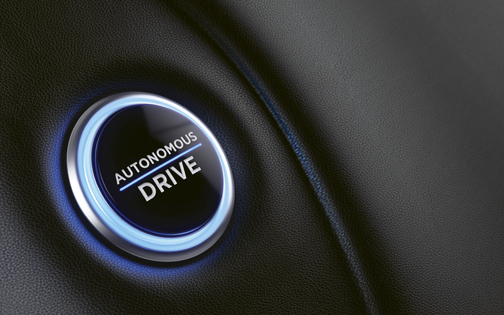Understanding transportation risks in an automated environment
The rising popularity and growth of shared mobility programs has forced insurers to adapt and create new coverage solutions and risk evaluation methods to serve the evolving needs of both individual and business customers. Now, a market still grappling with these fundamental changes in risk exposures and consumer behavior is facing yet another disruptive force—the development and introduction of increasingly sophisticated autonomous vehicle technology.
Driver assistance technology has been working its way into the vehicle fleet for several decades. From earlier systems as relatively simple as anti-lock brakes to more recent advanced features, such as adaptive cruise control and lane-keep assistance, manufacturers have slowly been moving toward the goal of fully automated vehicles. Within just the past few years, the pace of that change has quickly accelerated. The ability to reduce or even eliminate the need for human intervention in the driving experience will impact transportation dramatically, and auto insurance in particular.
With new trends in vehicle ownership and use resulting, in part, from shared mobility services, these emerging technologies and data-gathering capabilities are creating waves throughout the insurance industry.
As Cletus Nunes, director of sales at AAIS partner Octo Telematics North America succinctly states, “Autonomous vehicles will redefine both driver and vehicle.”
Levels of autonomy
It is helpful to understand the various levels of automation that manufacturers are pursuing. The U.S. Department of Transportation, through the National Highway Traffic Safety Administration (NHTSA), recently issued its Automated Driving Systems 2.0, A Vision for Safety, replacing the previous guidance published in 2016. Included in both of these guidance documents are these definitions for the various levels of vehicle automation:
Level 0—No Automation. There are no automated features in the vehicle. The driver performs all driving tasks.
Level 1—Driver Assistance. The vehicle is controlled by the driver, but some driving assist features may be included in the vehicle design.
Level 2—Partial Automation. The vehicle has combined automated functions, like acceleration and steering, but the driver must remain engaged with the driving task and monitor the environment at all times.
Level 3—Conditional Automation. The driver is a necessity but is not required to monitor the environment. The driver must be ready to take control of the vehicle at all times with notice.
Level 4—High Automation. The vehicle is capable of performing all driving functions under certain conditions. The driver may have the option to control the vehicle.
Level 5—Full Automation. The vehicle is capable of performing all driving functions under all conditions. The driver may have the option to control the vehicle.
Timeline
Many newer automobiles on the road today could be classified as Level 2 vehicles, and the 2019 model year promises that the first Level 3 vehicles will reach the market. How quickly we reach the point where Level 4 and Level 5 vehicles are available to consumers depends on several factors. The regulatory environment will certainly come into play, as will consumer attitudes towards the technology. Even the manufacturers have different timelines for introduction. Companies such as Volvo, Honda, Toyota, Nissan, and Hyundai are taking an iterative approach, aiming for Level 3 vehicles in production by 2020, with Level 4 vehicles available between 2025 and 2030. Others, notably Ford and Daimler, have taken a different approach, with plans to skip Level 3 vehicles and provide Level 4 capabilities as early as 2021.
While estimates vary significantly, there is no question that it will take time before these vehicles represent a significant portion of the active fleet. According to Nunes, “Fully autonomous vehicles are quite a distance in the future. Until then, there will be an increasing percentage of ‘mixed driving’ where some vehicles are driven by computers and others driven by persons—or a combination of both.”
Insurance impact
What is certain is that autonomous vehicles will result in a much different loss experience for insurance carriers. With the potential to reduce or even eliminate the human error that contributes to more than 90% of all accidents, the general consensus from risk management and claims professionals is that the frequency of both liability and collision losses will decline over the long run. However, loss severity faces a murkier future. The sensors, computers, and other equipment necessary to enable autonomous vehicles to function add thousands of dollars to their sticker price and must be programmed and configured precisely to function properly. This will mean higher costs to repair or replace these vehicles, at least in the short term. Looking further down the road, higher severity could eventually be mitigated as competition and continued technological advances put downward pressure on these costs.
In addition to these trends, autonomous vehicles could significantly impact the determination of liability after a loss. The use of telematics tools could be the solution. “In a world where computers and people are driving at different times, the telematics data that is derived will be critical for understanding the behavior of the vehicle … and a person, allowing an understanding of who was under control of the vehicle,” according to Nunes.
Identifying who (or what) was controlling the vehicle at the time the loss occurred will be critical in determining a claim against the personal auto liability coverage of the owner or driver of the vehicle, or the product liability coverage of the vehicle manufacturer. “Consider this,” Nunes continues, “telematics data may prove to be the best resource for determining fault for both drivers and manufacturers after an accident occurs.”
Beyond the impact to individual claims, telematics data also could result in new driving behaviors or programming. “Will people have to adapt to overly conservative computers, or will the computer code be updated to act more like humans?” ponders Nunes. Regardless, telematics data can provide insight to help carriers understand these new risks and allow manufacturers to ensure that their vehicles are performing safely.
With new trends in vehicle ownership and use resulting, in part, from shared mobility services, these emerging technologies and data-gathering capabilities are creating waves throughout the insurance industry. As the lines between personal and commercial risks continue to grow more blurry in the auto insurance segment, the carriers and agents able to understand the issues and properly assess the exposures will be better suited to address the needs of their customers and succeed in tomorrow’s market.
The author
Casey Brewer is the auto product manager at AAIS. Established in 1936, AAIS is a national, member-owned, nonprofit advisory organization that provides P-C carriers “best in class” insurance forms, rules and loss-cost information.






